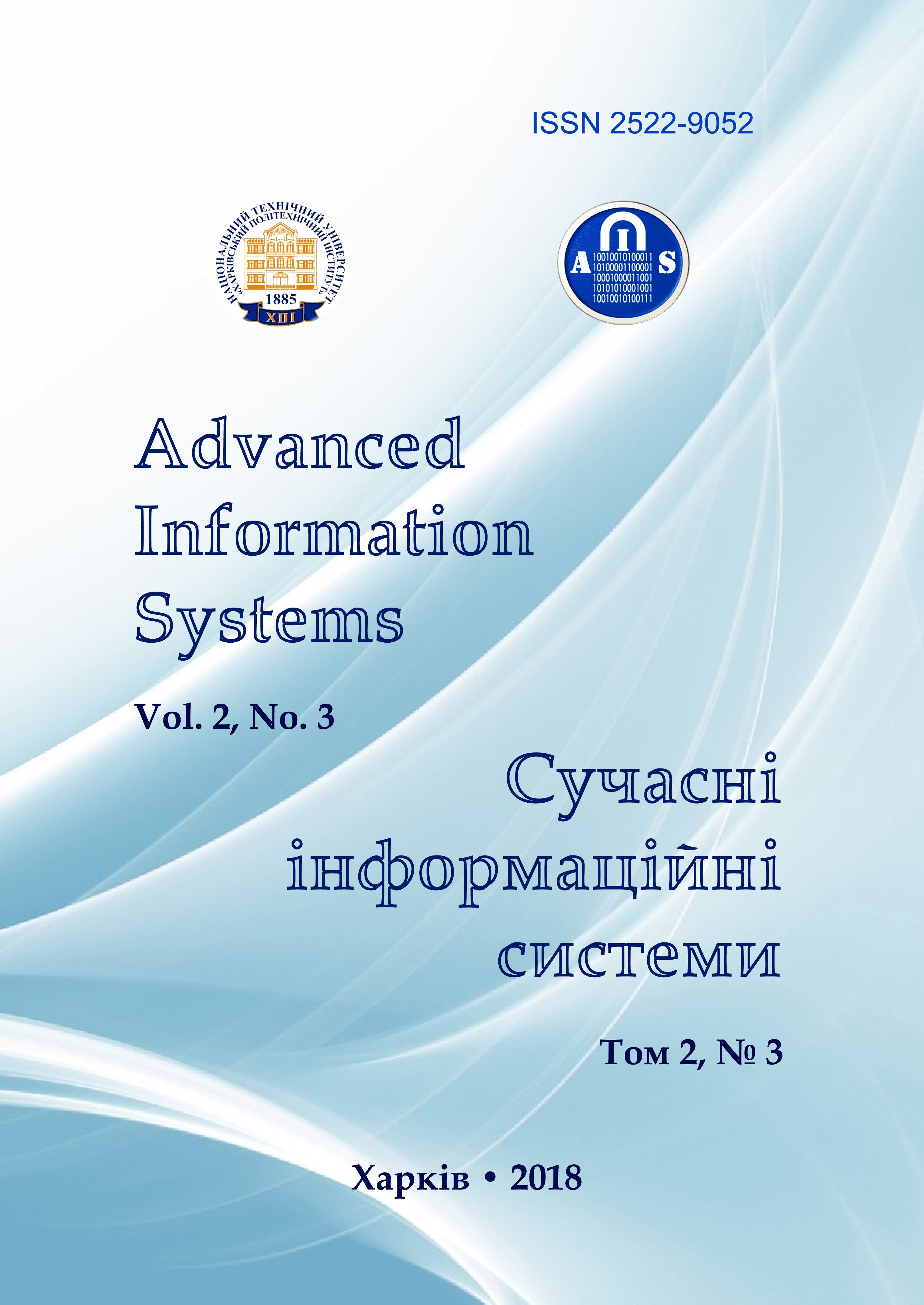The method for the synthesis of generators in the terminal field of GF (3)
Main Article Content
Abstract
The subject of progress in this article is a process of synthesis of generators of independent pseudo-successive messages in the main field of GF (3) for the multiplication unit. The problem: develop a method for the synthesis of generators of non-first pseudo-disputable succession in the main field of the GF (3), which is based on a multiply basis based on victorious matrixes of words in the basic element of the generation. The task: based on the analysis of known approaches to the generation of sequences, develop a method that, as compared with the binary shift register, allows increasing the length of a sequence and simplifying the generation scheme. The approaches used are: the use of cyclic coding of states, which allows to apply the cross lines of the triggers of the corresponding channel of the register as the multiplication operation, which allows to significantly simplify the multiplication unit. The following results were obtained: a method for synthesizing generators in a finite field GF (3) with a simplification of the multiplication blocks for coefficients, based on the use of a coupling matrix as the main element of generation. The mathematical apparatus for describing the operation of a shift register with nonlinear feedbacks and its functional diagram are given. The paper shows an example of the formation of the first state of a nonlinear shift register, depending on the free coefficient of the generating polynomial. Conclusions. A method for synthesizing nonlinear pseudo-random sequence generators in a finite field GF (3) with simplification of the multiplication unit is proposed, examples of constructing a matrix of links in a finite triple field are shown.
Article Details
References
Blehut, R. (1986), Theory and Practice of Error Control Codes, Mir, Moscow, 576 p.
Mutter, V.M. (1990), Fundamentals of noise-free TV information, Energoatomizdat, Leningrad, 288 p.
Rysovany, A.N. and Gogot, V.V. (2007), “Selection of polynomials for nonlinear shift registers with feedbacks on the criterion of forming a sequence of maximum length”, Control Systems, Navigation and Communications, Central Research Institute of Navigation and Control, Kyiv, No. 1, pp. 77 - 79.
Rysovany, A.N. (2018), “Method of generating a nonlinear pseudorandom sequence without using feedbacks”, System Control, Navigation and Connection, PNTU, Poltava, No. 4 (44), pp. 144-146.
Litikov, I.P. (1990), Ring testing of digital devices, Energoatomizdat, Moscow, 160 p.
Goryashko, A.P. (1987), Synthesis of Diagnosed Computing Device Circuits, Nauka, Moscow, 288 p.
Vatolin, D., Rakushnyak, A., Smirnov, M. and Yukin V. (2002), Data Compression Methods. Device archivers, image and video compression, DIALOG-MEPI, Moscow, 384 p.
Soroka, L.S., Rysovany, A.N. and Frost B.I. (2012), A method of obtaining a pseudo-random sequence based on the use of a coupling matrix in the final field GF (3), Patent of Ukraine No. u201109344, Byul. No. 5.
